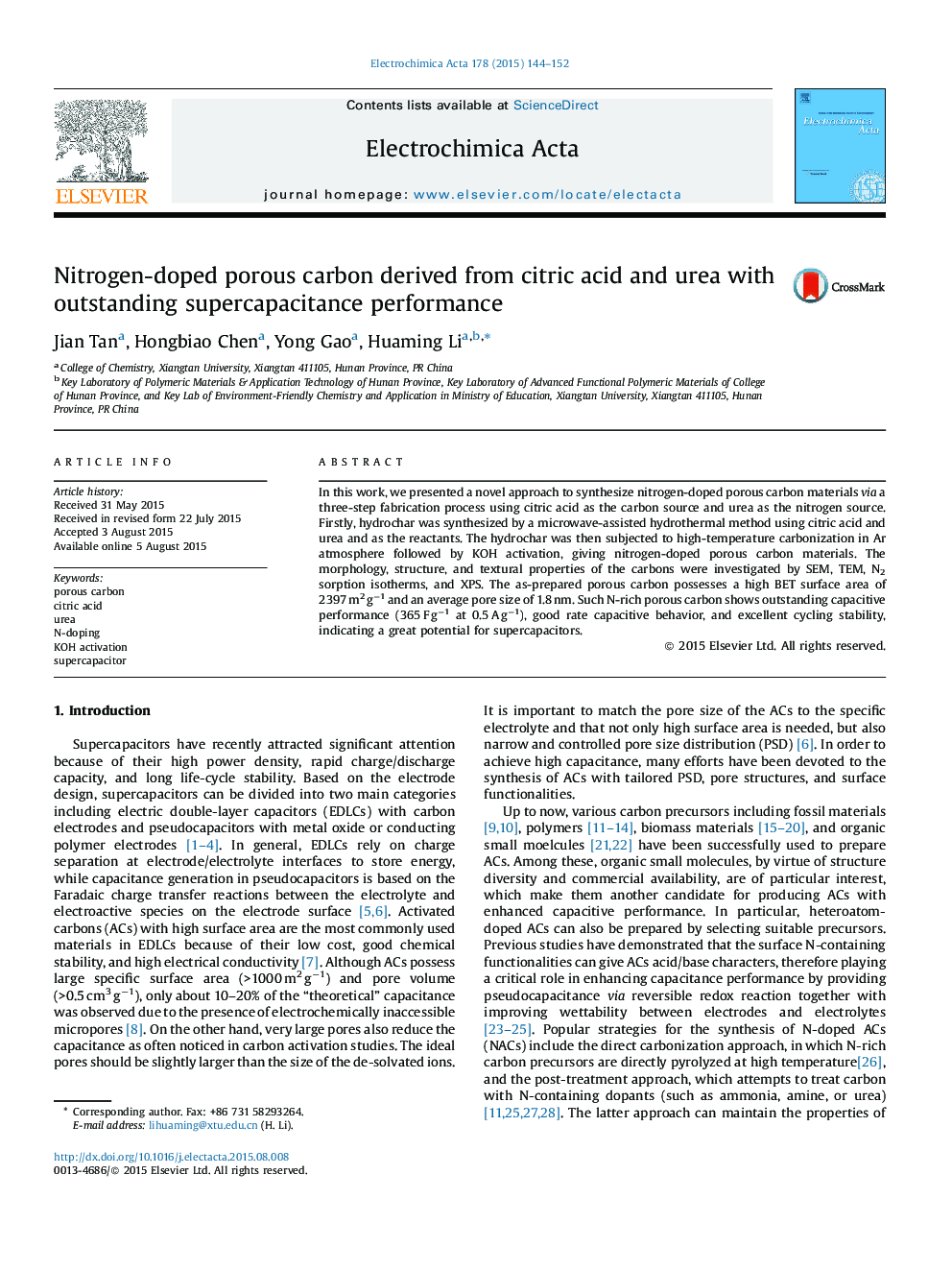| Article ID | Journal | Published Year | Pages | File Type |
|---|---|---|---|---|
| 183668 | Electrochimica Acta | 2015 | 9 Pages |
•Citric acid/urea-derived porous carbon (CUA) was fabricated for supercapacitors.•CUA was prepared by microwave-hydrothermal process followed by pyrolysis and activation.•The electrochemical tests exhibited a high specific capacitance of 365 F g−1.•Retention of 98.7% of its initial capacitance was achieved after 10,000 cycles.
In this work, we presented a novel approach to synthesize nitrogen-doped porous carbon materials via a three-step fabrication process using citric acid as the carbon source and urea as the nitrogen source. Firstly, hydrochar was synthesized by a microwave-assisted hydrothermal method using citric acid and urea and as the reactants. The hydrochar was then subjected to high-temperature carbonization in Ar atmosphere followed by KOH activation, giving nitrogen-doped porous carbon materials. The morphology, structure, and textural properties of the carbons were investigated by SEM, TEM, N2 sorption isotherms, and XPS. The as-prepared porous carbon possesses a high BET surface area of 2397 m2 g−1 and an average pore size of 1.8 nm. Such N-rich porous carbon shows outstanding capacitive performance (365 F g−1 at 0.5 A g−1), good rate capacitive behavior, and excellent cycling stability, indicating a great potential for supercapacitors.
Graphical abstractFigure optionsDownload full-size imageDownload as PowerPoint slide
